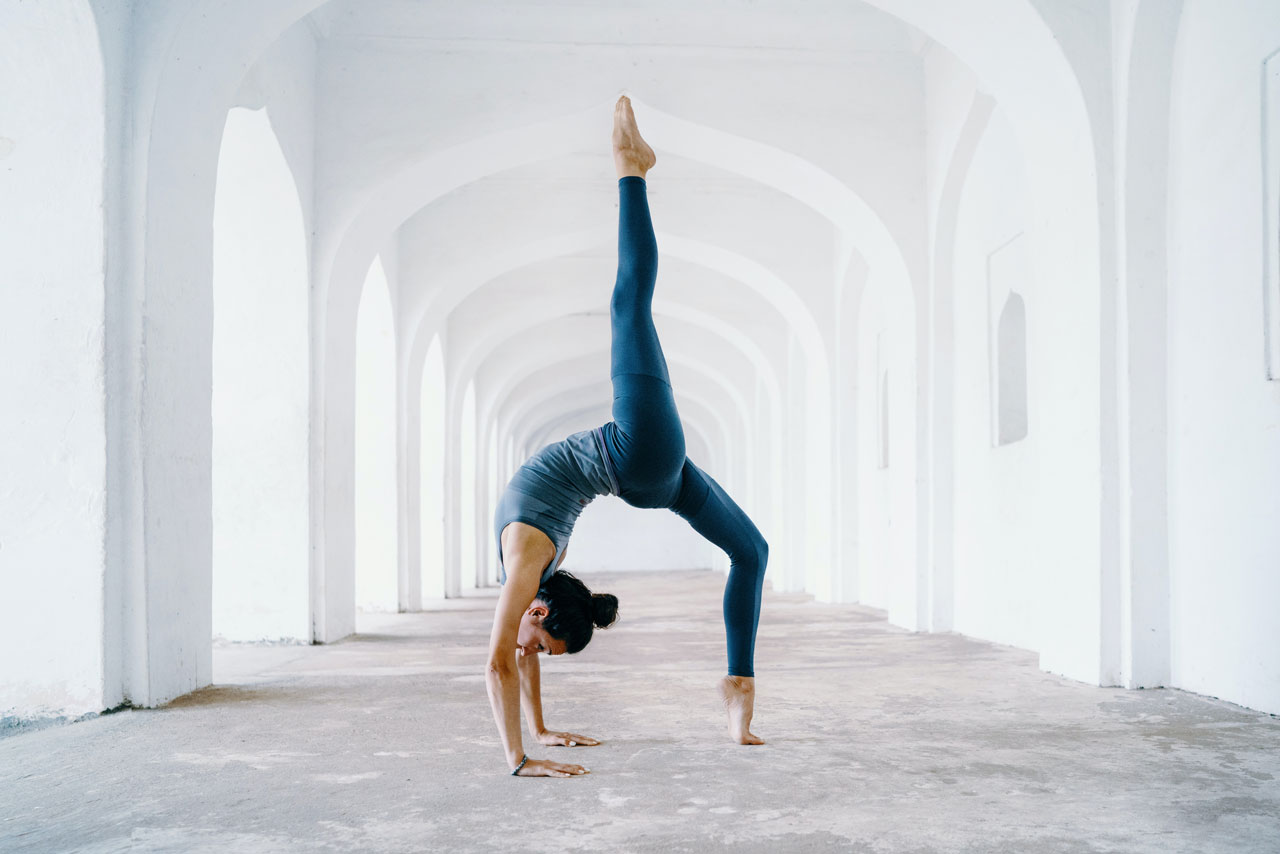Named for renowned yoga master B.K.S. Iyengar, Iyengar yoga is a style emphasizing precise alignment, sequencing, and technique during asana practice. Known for its rigorous attention to detail, the use of props, and discipline focus, Iyengar yoga works to cultivate strength, mobility, stability, and body awareness in practitioners. Read on to learn the history, main principles, and benefits of this distinct tradition.
Table of Contents
You may also want to know: How to Start a Yoga Practice
Origins and History
Mr. Iyengar began practicing yoga as a teenager in the 1930s to improve his poor health. He eventually studied under yoga master Tirumalai Krishnamacharya, developing a system focused on alignment. In the 1970s, he published Light on Yoga, which introduced Iyengar yoga globally through illustrated poses and teaching philosophy.
Strict Alignment Cues
Proper anatomical alignment in each pose is the heart of Iyengar yoga, with teachers providing prescriptive verbal and hands-on adjustments. Instructions meticulously describe body placement down to spacing between finger joints. This precision builds awareness and prevents injury. Standing poses like Warrior I may take several minutes to refine.
Sequencing for Safety
Iyengar yoga follows specific sequenced progressions moving from foundational poses towards more complex asanas once basics are mastered. This step-by-step building allows muscles and joints to strengthen safely for advanced postures. Sequencing also emphasizes balancing opposite body areas.
Slower Precision Overflow
Unlike vinyasa or power yoga, Iyengar focuses on holding poses longer to perfect subtle alignment. Attention goes to fine details versus moving rapidly through sequences. There is no “flow” between poses, just mindful precision. This trains strength and focus. Classes spend extensive time on standing poses before inversions.
Yoga Props for Stability and Support
Iyengar yoga was introduced using blocks, straps, bolsters, chairs, blankets, and more to support the body in poses for optimal alignment. This reduces strain and risk of injury while allowing students to extend further into asanas with stability. Props accommodate different ability levels in the same class.
Developing Awareness and Intuition
Meticulous focus on anatomical positioning and support trains keen body awareness and intuition. Over time, Iyengar yogis learn to detect misalignments and self-correct using internal feedback versus just responding to external instructor cues. This helps prevent future issues.
Accessibility for All Abilities
The props, assistant adjustments, and stepwise progression make Iyengar yoga accessible for students with limitations, injuries, or conditions making yoga challenging. The individualized approach accommodates varying needs under one tent. Therapeutic applications of Iyengar yoga aid rehabilitation.
Benefits of Practice
Regular Iyengar practice increases flexibility, strength, balance, body awareness, pain relief, stress reduction, and recovery from illness or trauma. Therapeutically, it helps manage conditions like arthritis, anxiety, and respiratory issues using targeted poses and supports. Students laud Iyengar’s transformative effects.
Home Practice Guides
Meticulous alignment principles mean Iyengar yoga is one of the most effective systems for home practice. Mr. Iyengar’s 1966 classic manual Light on Yoga details hundreds of poses step-by-step, allowing independent learning. Clear Media Productions also offers high-quality home practice resources.
From therapeutic applications to advanced asana mastery, Iyengar yoga’s alignment-centric methodology, props, sequencing, and philosophy of patience help students build a strong practice foundation. While challenging for newcomers, Iyengar yoga cultivates stability, awareness, intuition, and adaptability over time.
Related Links:
https://en.wikipedia.org/wiki/Yoga
